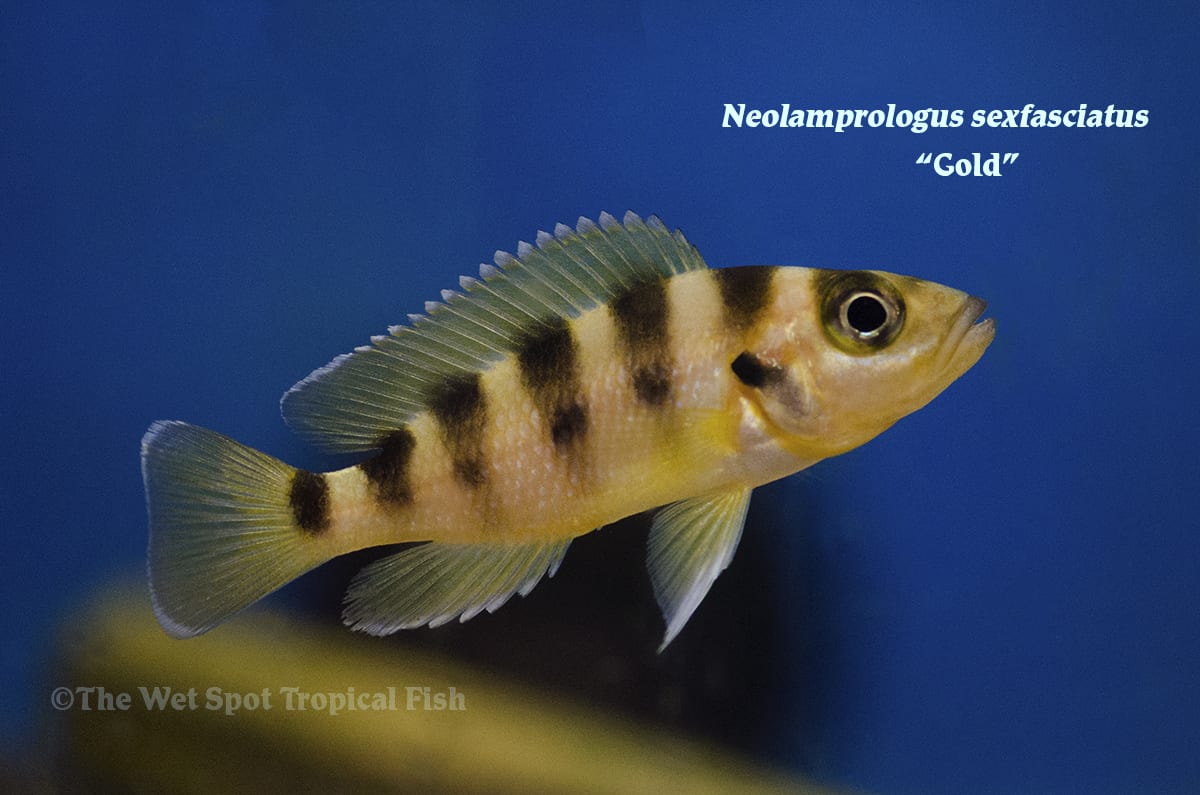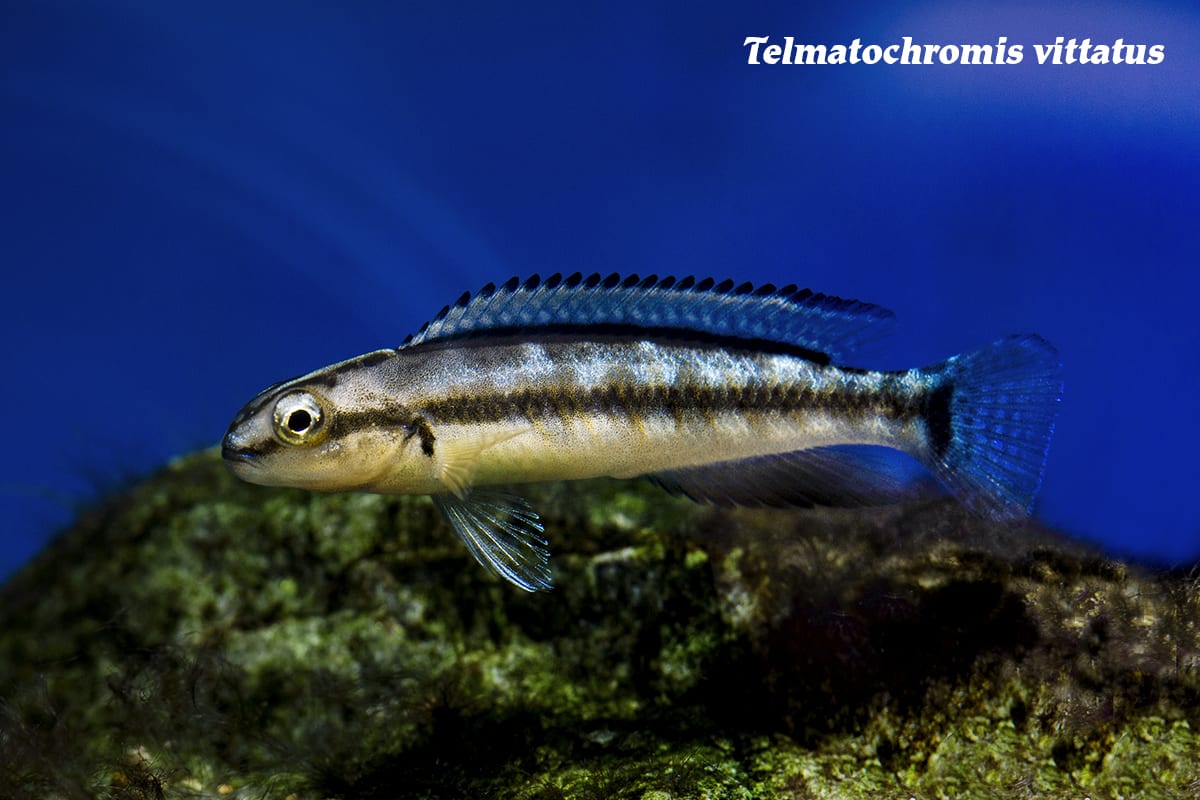Lakes Have Layers
Lakes Have Layers
What do ogres, onions, and lakes have in common? That’s right…layers!, and no lake has more layers than Tanganyika. The largest volume of freshwater in the world, this lake is the 2nd oldest in the world, and is home to about 250 described species of tropical cichlids, 98% of which are endemic. Representing the most diverse adaptive radiation of vertebrates in the world, Tanganyikan cichlids boast the most varied genetics, morphologies, and behaviors of any freshwater habitat. In the vast expanse of Tanganyika, there is a cichlid that fills every niche from the rocky shorelines to the depths of over 600 feet! The ones we’re most familiar with, and that are best suited for aquarium life, are found at depths less than 300 feet. But, even in that small slice there are distinct niches, and the countless species that thrive in them make astounding aquarium pets. Looking at the 3 closest layers to the shore, some standouts from our collection include: Variabilichromis moorii, Neolamprologus sexfasciatus “Gold”, and Telmatochromis vittatus.
Scientific NameVariabilichromis moorii
Common NameNone
Temperature / pH76 to 81°F / 8.3 to 9.0 pH
Native LocationLake Tanganyika
Preferred DietAlgae & invertebrates
Found only in the shallow shoreline of the southern part of the lake, V. mooriifeeds, spawns, and cares for its young concealed among rocks. In captivity this species needs a tank, of at least 24 inches, though it need not be deep. Tanks should be equipped with sandy substrate and piles of rockwork forming several sheltered areas. A cave spawner by nature, these peaceful cichlids form monogamous pair bonds, and show biparental care. Reaching just 4 inches in length, they are dark in coloration with big eyes, big lips, a sail-like dorsal fin, extended pectoral fins, and a rounded caudal fin edged in bright blue. Different geographic color morphs can be found in juveniles, but they grow into the same adult coloration. Scientists believe the juvenile color morphs adapted as a means for pairs to sneak their young into clutches of other fish to be cared for by “adoptive” parents. This would allow the V. moorii pairs to spawn more frequently. These Tanganyikans are peaceful, even when spawning, and can be kept with other Tanganyikan species that inhabit different regions of the tank. The only Lamprologine species known to consume filamentous algae, they are omnivorous, feeding on invertebrates and zooplankton. In captivity, their diets should consist of frequent live and frozen offerings with the addition of a vegetal component like algae or spirulina.
Scientific NameNeolamprologus sexfasciatus “Gold”
Common NameNone
Temperature / pH76 to 81°F / 8.3 to 9.0 pH
Native LocationLake Tanganyika
Preferred DietAlgae & invertebrates
Moving a little deeper, N. sexfasciatus can be found in the so-called “intermediate zones” of the lake. Also found in the southern part of the lake, they inhabit shallow rocky regions, but also venture out into open water with sandy bottoms and scattered rocks. Aquaria should contain sandy substrate and piles of rockwork with regions of open water in between. Reaching up to 6 inches in length, these cichlids have long bodies with pointed heads, and extended fins. They exist in several geographic color morphs including “Gold”, where their bodies are indeed gold, with dark vertical bars along their backs, and fins bordered in blue. This species can be aggressive, territorial, and is predatory to boot. They can be kept in species-only tanks, but may be mixed with other medium-sized Tanganyikans that occupy different regions of the tank. Piscivorous by nature, they hunt small fish, and should be fed varied meaty foods supplemented by high-quality cichlid pellets. Due to their carnivorous nature, they produce a significant amount of waste, and require filtration to compensate.
Scientific NameTelmatochromis vittatus
Common NameNone
Temperature / pH76 to 81°F / 8.3 to 9.0 pH
Native LocationLake Tanganyika
Preferred DietSmall invertebrates
Venturing a bit further into regions of 16 to 65 feet of depth, T. vittatus dwells in open water, adjacent to rocky regions. Tanks should be deep, and setup with sandy substrate and scattered piles of rocks, but the habitat should be characterized by large amounts of open swimming space. Reaching just 3.5 inches in length, these long-bodied cichlids are pale periwinkle in coloration with long, black horizontal striping, and accents of yellow and blue on their cheeks and fins. Similar in behavior to Julidochromis spp. they are ideal for small Tanganyikan community tanks with shell-dwellers and Cyprichromis. Shy, and somewhat territorial, they should not be kept in large conspecific groups unless the tank is sufficiently sized with several well-defined territories. They will pair-bond, and many aquarists begin with a group of juveniles, and once a bond is formed, the other individuals are removed from the tank. Opportunistic omnivores by nature, they eat mostly invertebrates, and live and frozen foods should make up most of their diet. They will accept dried foods supplementally, and require some amount of vegetal matter like spirulina.
|
|
|


